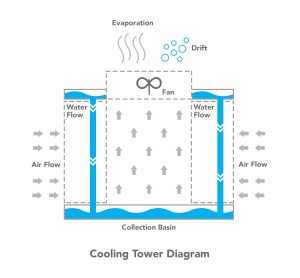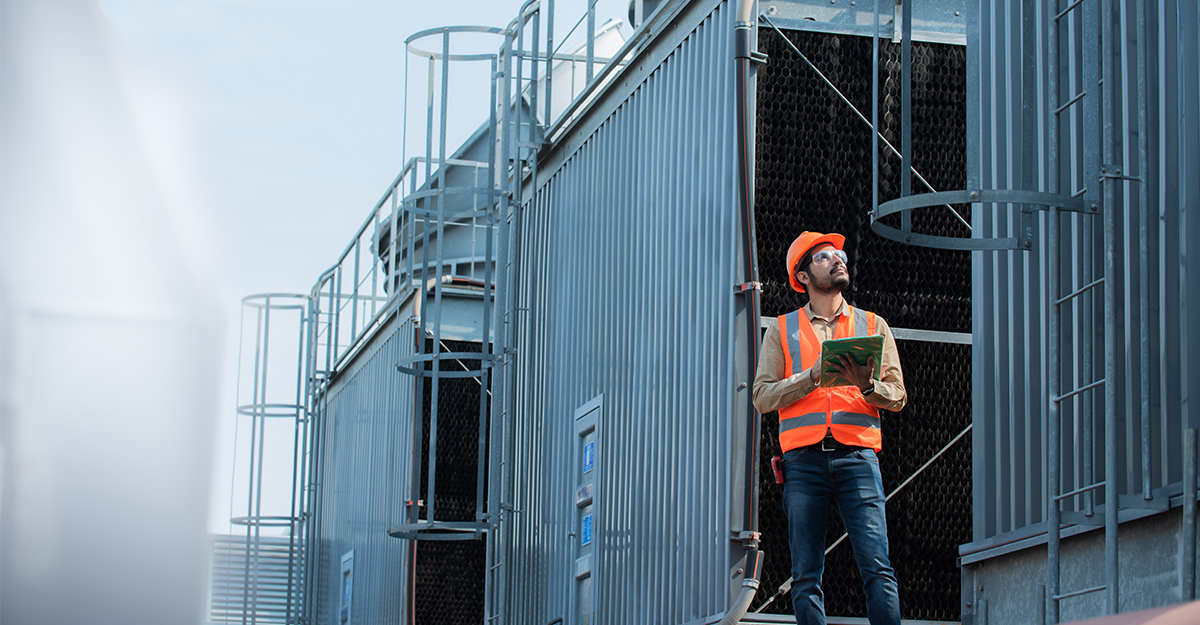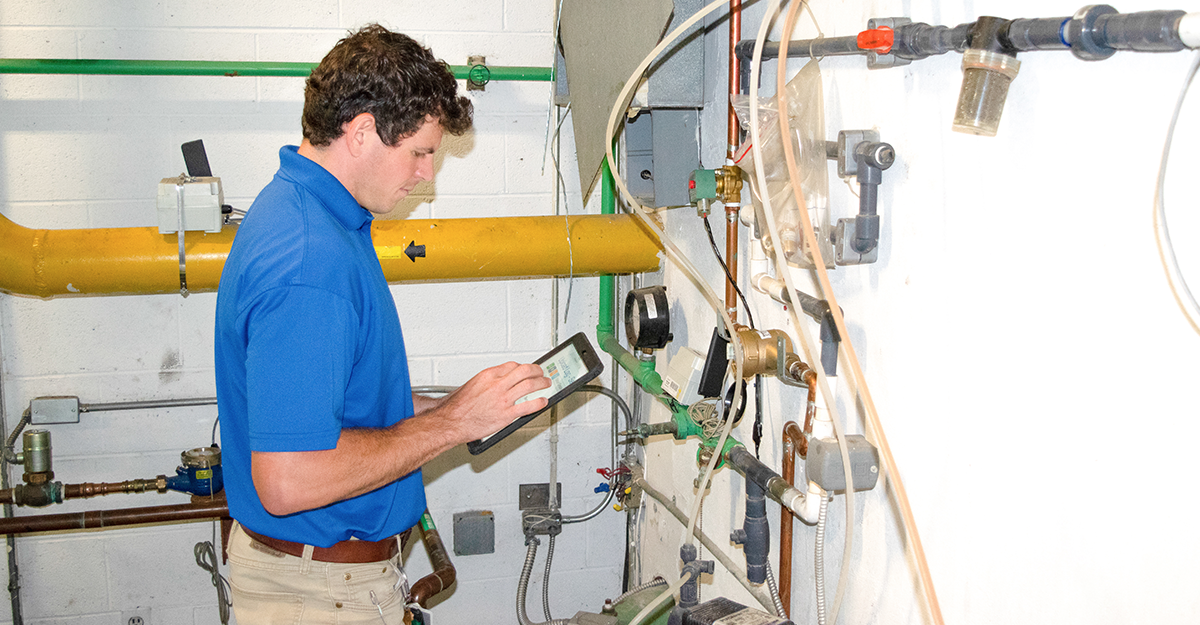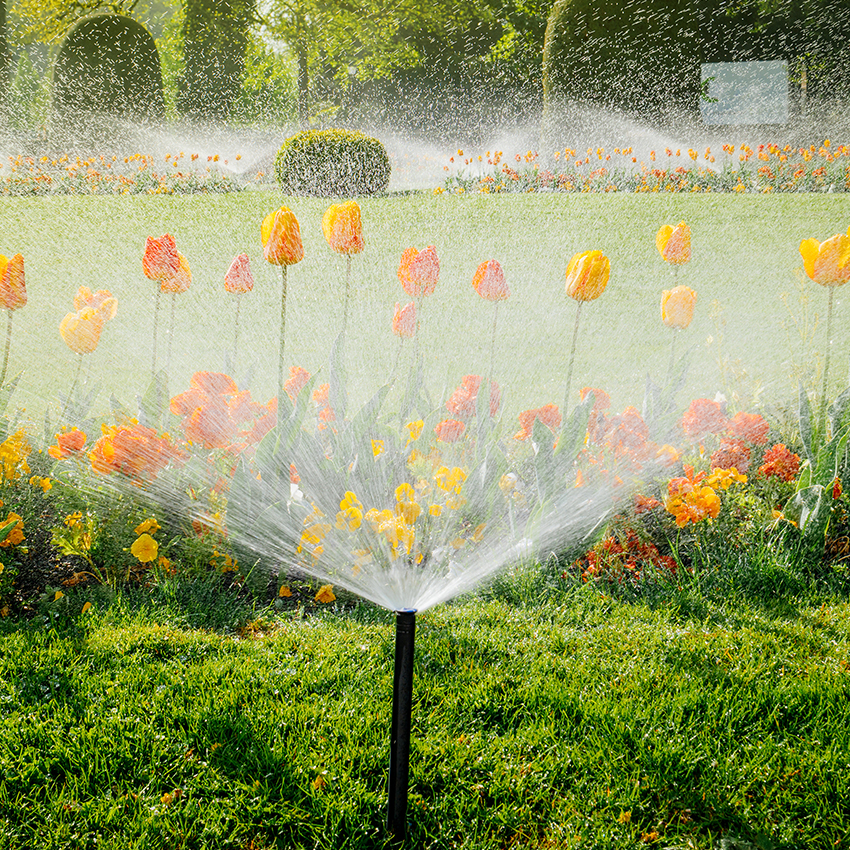Cooling towers dissipate heat from recirculating water used to cool chillers, air conditioners, or other process equipment to the ambient air. Heat is rejected to the environment from cooling towers through the process of evaporation. Therefore, by design, cooling towers use significant amounts of water.
The thermal efficiency and longevity of the cooling tower and equipment depend on the proper management of recirculated water. Water leaves a cooling tower system in one of four ways:
 Evaporation: The primary function of the tower and the method that transfers heat from the cooling tower system to the environment.
Evaporation: The primary function of the tower and the method that transfers heat from the cooling tower system to the environment.
Drift: A small quantity of water may be carried from the tower as mist or small droplets. Drift loss is small compared to evaporation and blowdown and is controlled with baffles and drift eliminators.
Blowdown: When water evaporates from the tower, dissolved solids (such as calcium, magnesium, chloride, and silica) remain in the recirculating water. As more water evaporates, the concentration of dissolved solids increases. If the concentration gets too high, the solids can cause scale to form within the system. The dissolved solids can also lead to corrosion problems. The concentration of dissolved solids is controlled by removing a portion of the highly concentrated water and replacing it with fresh make-up water. Carefully monitoring and controlling the quantity of blowdown provides the most significant opportunity to conserve water in cooling tower operations.
Basin leaks or overflows: Properly operated towers should not have leaks or overflows. Check float control equipment to ensure the basin level is being maintained properly, and check system valves to make sure there are no unaccounted for losses.
The sum of water that is lost from the tower must be replaced by make-up water:
Make-Up = Evaporation + Blowdown + Drift
If you review your facility’s water bill, you will notice that you are charged a “sewer fee”. The sewer fee is based on the amount of incoming water supplied by your water provider.
By default, the provider assumes that the amount of water sent down the drain to the sewer is the same as the amount of incoming water as measured by the water meter. For cooling towers, this is absolutely not the case. As you can see in the diagram above, much of the water supplied to the cooling tower evaporates as part of the cooling process (often 50% or more). Therefore, the water company is charging you a sewer fee for the water that evaporates.
For most companies using cooling towers, the water provider will issue a credit for a portion of the sewer fee, if log-books are maintained to document the amount of water that flows into a cooling tower and the amount of water that is sent down the drain. This can easily be done by installing WaterSignal’s real time water monitoring on the make-up and blowdown lines of the cooling tower.
Like a doctors stethoscope, WaterSignal uses sensors to listen to the pulse of your existing meters. Usage data is then collected and sent wirelessly to a secure web portal where water consumption can be drilled down by month, day, or even by hour. When it’s time to submit your log-book for credit, simply log on to your secure WaterSignal dashboard, select your desired dates, and export your data into Excel or PDF format.
In addition to water monitoring, WaterSignal also features real time leak detection. When water spikes above the preset hourly or daily limit, the device detects the problem and immediately alerts the building engineer. If a building has more than one meter being monitored, such as one for the cooling tower and another for the main line, the engineer can quickly determine which meter spiked in order to isolate the problem area faster for repair.
Evaporation credits can be a great way to produce substantial savings and free up capital for other sustainability projects. A small investment now can prevent profits from evaporating and reduce expenses in the future.
With water rates rising and state conservation mandates growing, why pay more when you can conserve water and pay less?
WaterSignal is a recognized innovator in water conservation due to its real time water monitoring and leak detection system. Leveraging over two decades of engineering expertise, WaterSignal monitors domestic meters, irrigation systems, and cooling towers for residential, commercial, multifamily, senior living, medical, schools and colleges. WaterSignal’s intelligent, non-invasive device accurately measures water usage and reports the data in real time to a secure dashboard. While dramatically reducing water costs and footprint, WaterSignal saves valuable time and provides unique insight on our most precious resource, water.
SOURCES
Energy.gov – Follow US Dept. of Energy on Twitter
Aquaclear, LLC – Water Treatment Specialists



